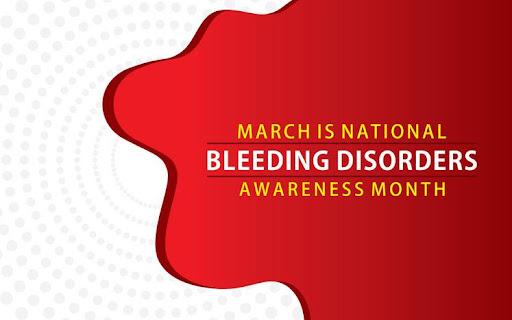Bleeding Disorders Awareness Month
March is Bleeding Disorders Awareness Month, which means that it's time to learn more about this serious health condition. The campaign aims to educate people about all types of bleeding disorders and how they can help someone experiencing one. There are numerous diverse types of bleeding disorders; they're usually genetic, but they can also be caused by medications or illnesses, such as cancer.
Our team has a full breakdown of bleeding disorders to be made aware of and what treatment plans are available for each one.
What Are Bleeding Disorders?
Bleeding disorders are a group of medical conditions that cause the person to bleed excessively, often because they cannot clot blood as well as most people — leading to heavy and prolonged bleeding after an injury. There are many different bleeding disorders, but they all share one common symptom: an abnormal amount of blood loss from the body.
What Causes a Bleeding Disorder?
As stated above, a person can have a bleeding disorder due to difficulty clotting blood when they bleed. Your body requires blood proteins called platelets to help blood clot. Sometimes you can have too few of these substances, or they may not work as well as they should.
Bleeding disorders are often hereditary, but they can also be caused by trauma (e.g., injury), illness (e.g., cancer), medications that affect the production of clotting factors or platelets, or pregnancy complications.
Other causes of bleeding disorders:
-
Protein C deficiency
-
Low red blood cell count
-
Factor XI deficiency
Common Bleeding Disorder Types
Bleeding disorders can be very serious and even life-threatening, but they are also surprisingly common. There are many different types of these disorders, which may not be known by those who have never experienced or known anyone who experiences them. Some examples include:
Hemophilia A and B: Hemophilia is a type of bleeding disorder in which blood doesn't clot properly, making it difficult for the person to stop bleeding. This can often cause unusual bleeding in a person's joints. Although rarer than other types, it can cause some serious life-threatening issues.
Von Willebrand Disease: There are many proteins in your blood that help with clotting, one of these proteins being known as the von Willebrand factor (or VWF.) This disease is the most typical inherited disorder, and people with this condition may experience heavy or prolonged bleeding periods.
Hemolytic Anemia: This is an ailment where the body attacks its own red blood cells for no apparent reason.
Signs of a Bleeding Disorder
To know if you have a bleeding condition, it is important to be aware of the signs and symptoms.
Common signs of bleeding disorders:
-
Unexplained bruises and unusual scars
-
Prolonged nosebleeds
-
Heavy menstrual periods
-
Easy cuts and scrapes that won't stop bleeding
-
Trouble breathing or feeling lightheaded when their blood pressure drops too low
It is crucial that you get tested by your doctor or another medical professional to find out for sure. If left untreated, these disorders can lead to serious health problems.

